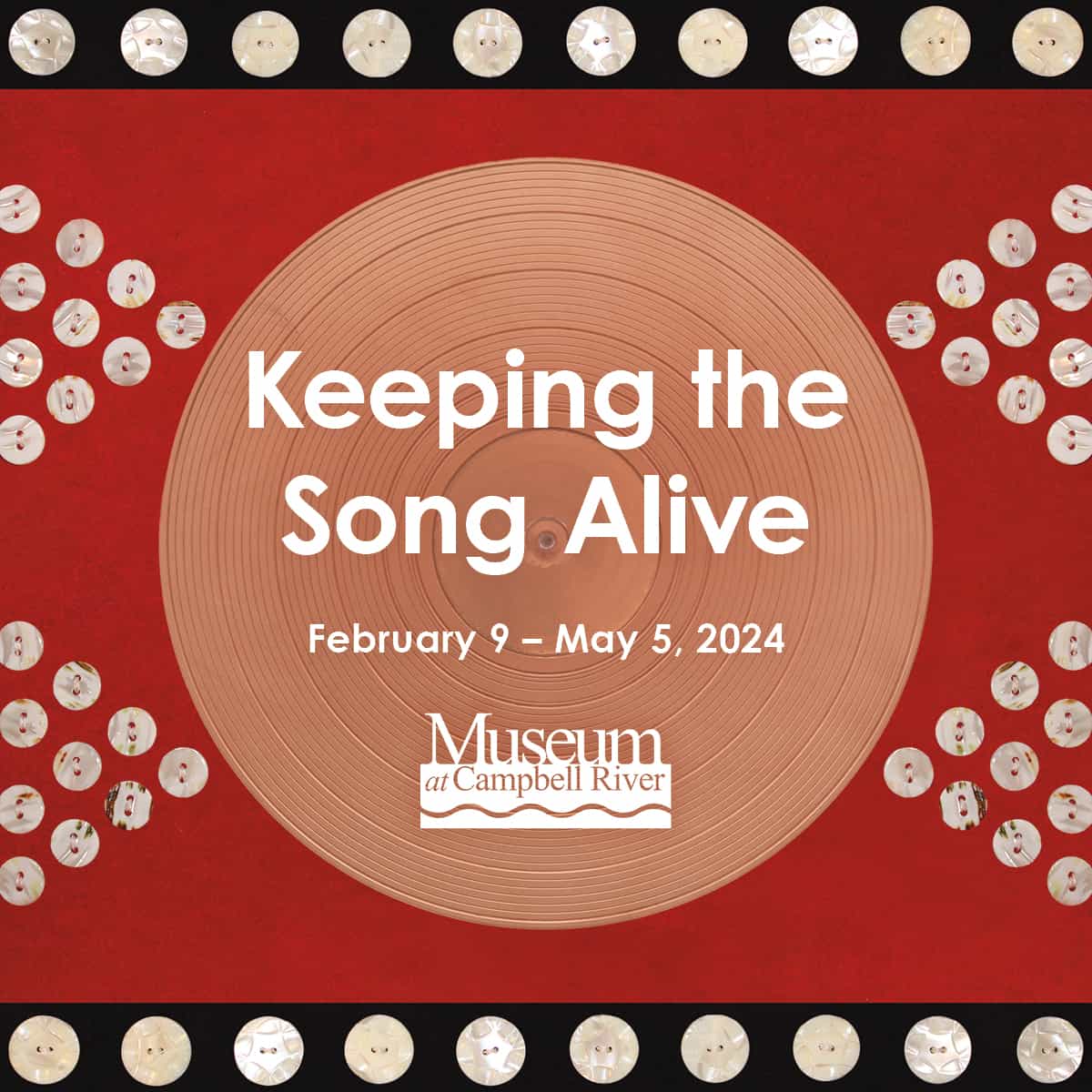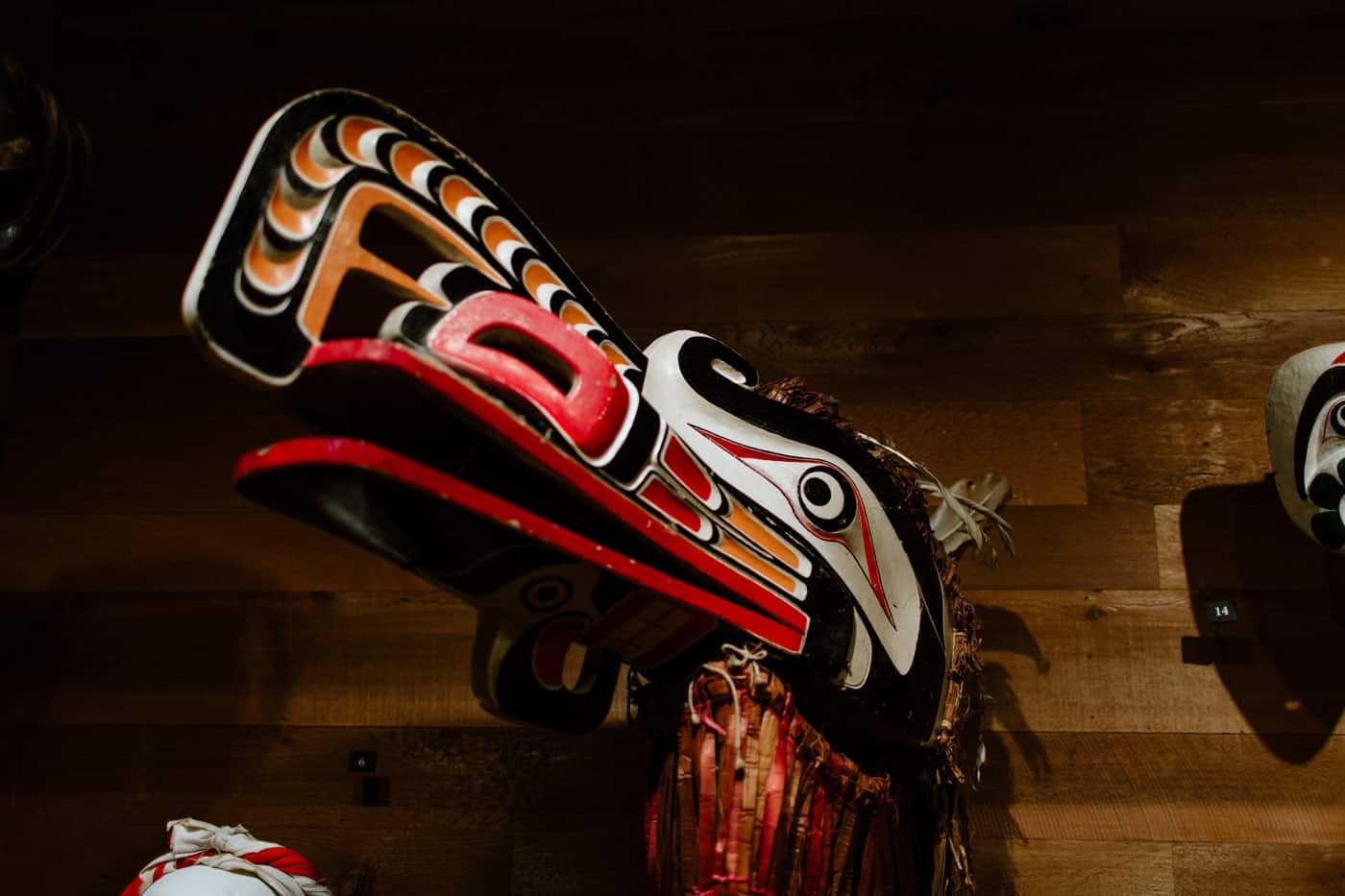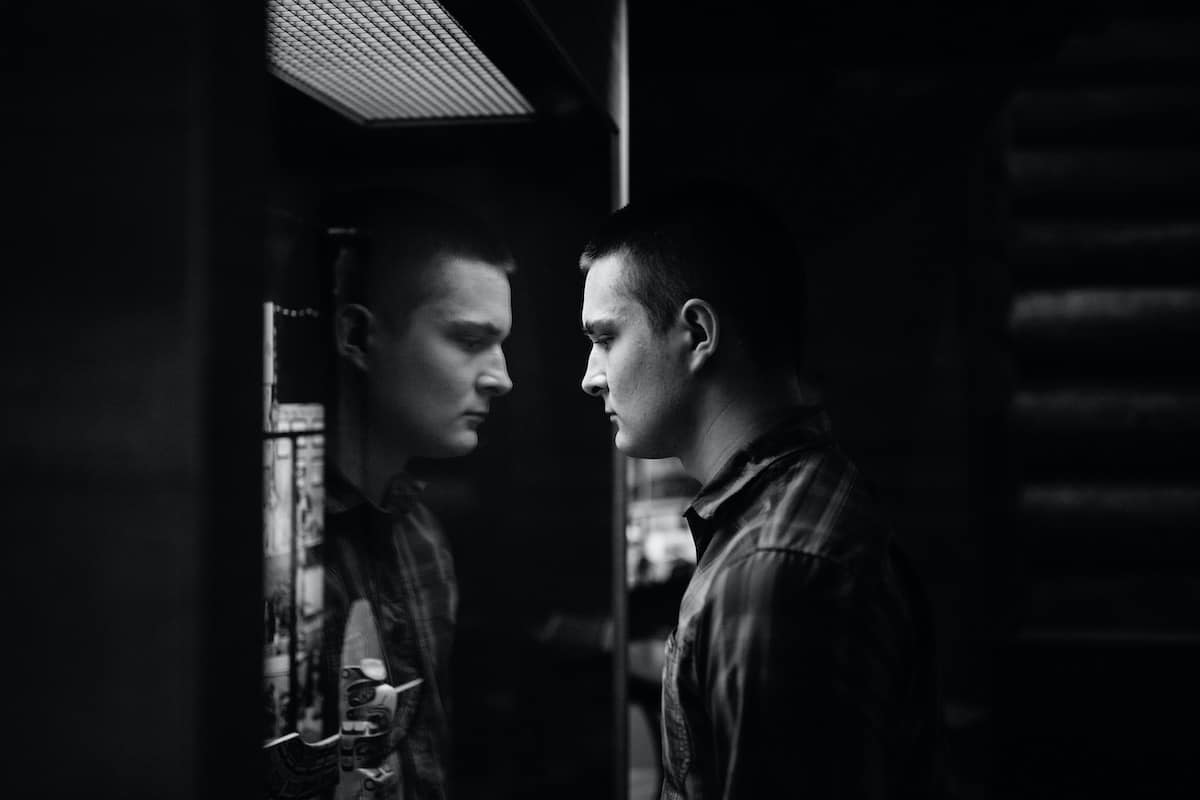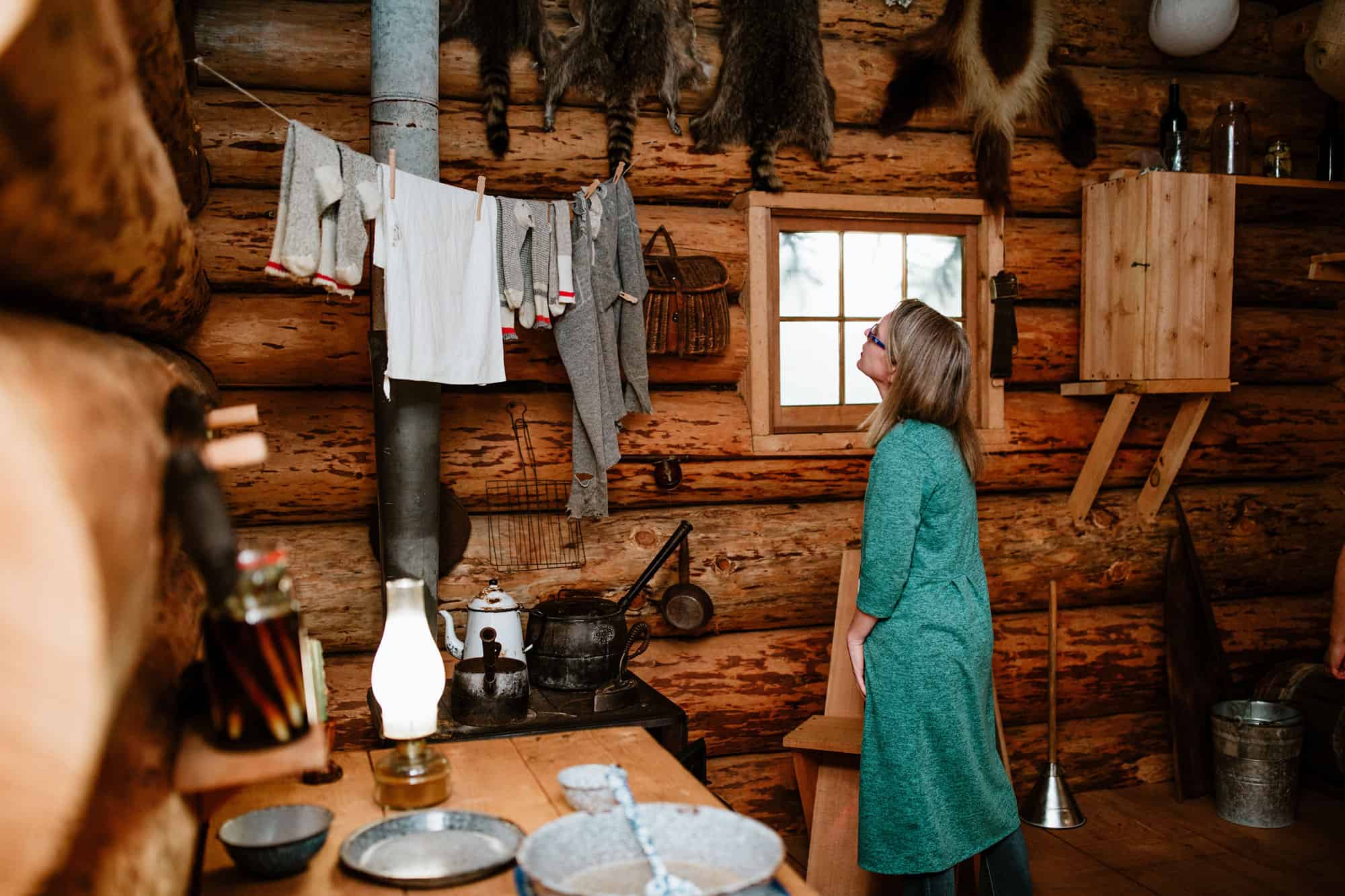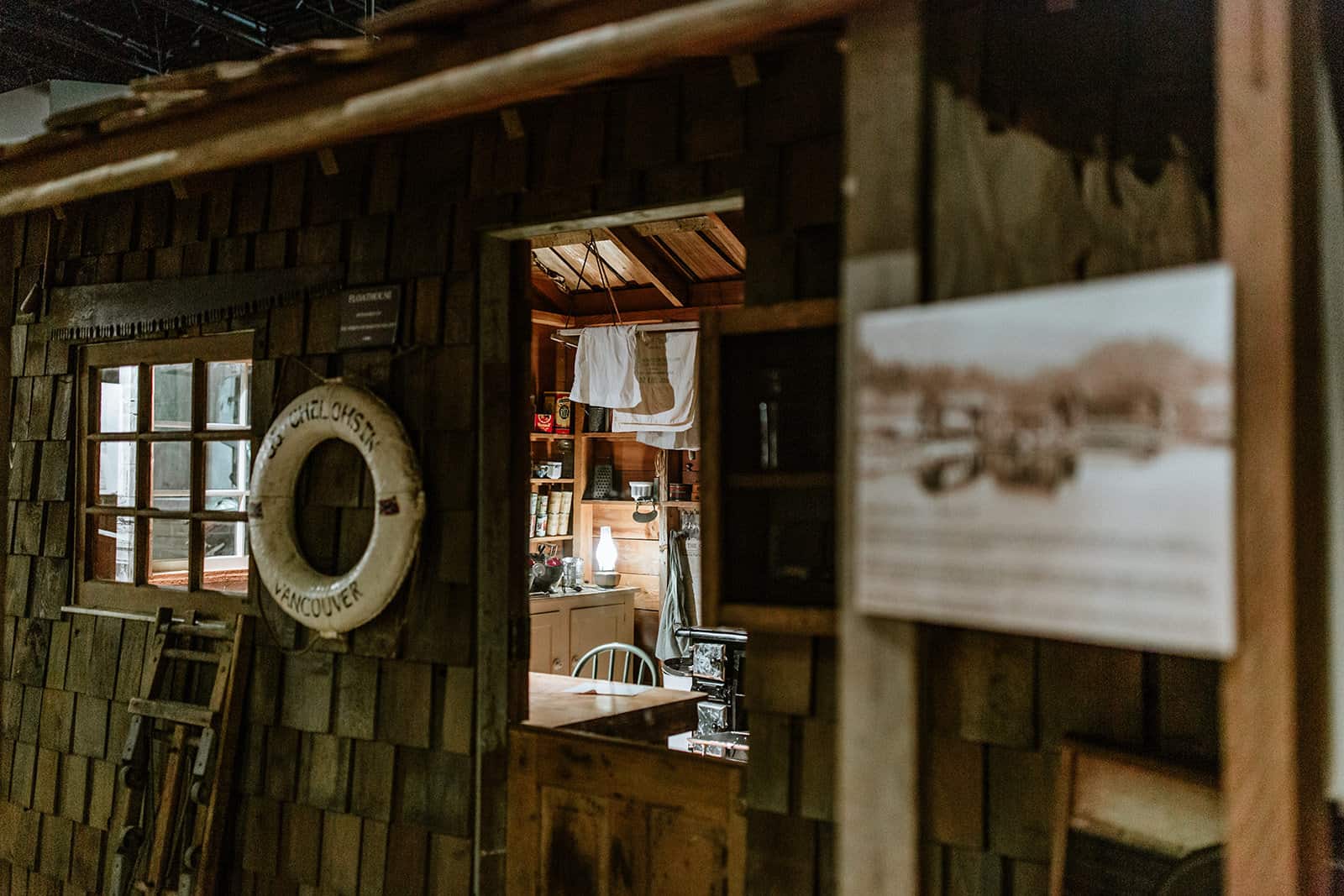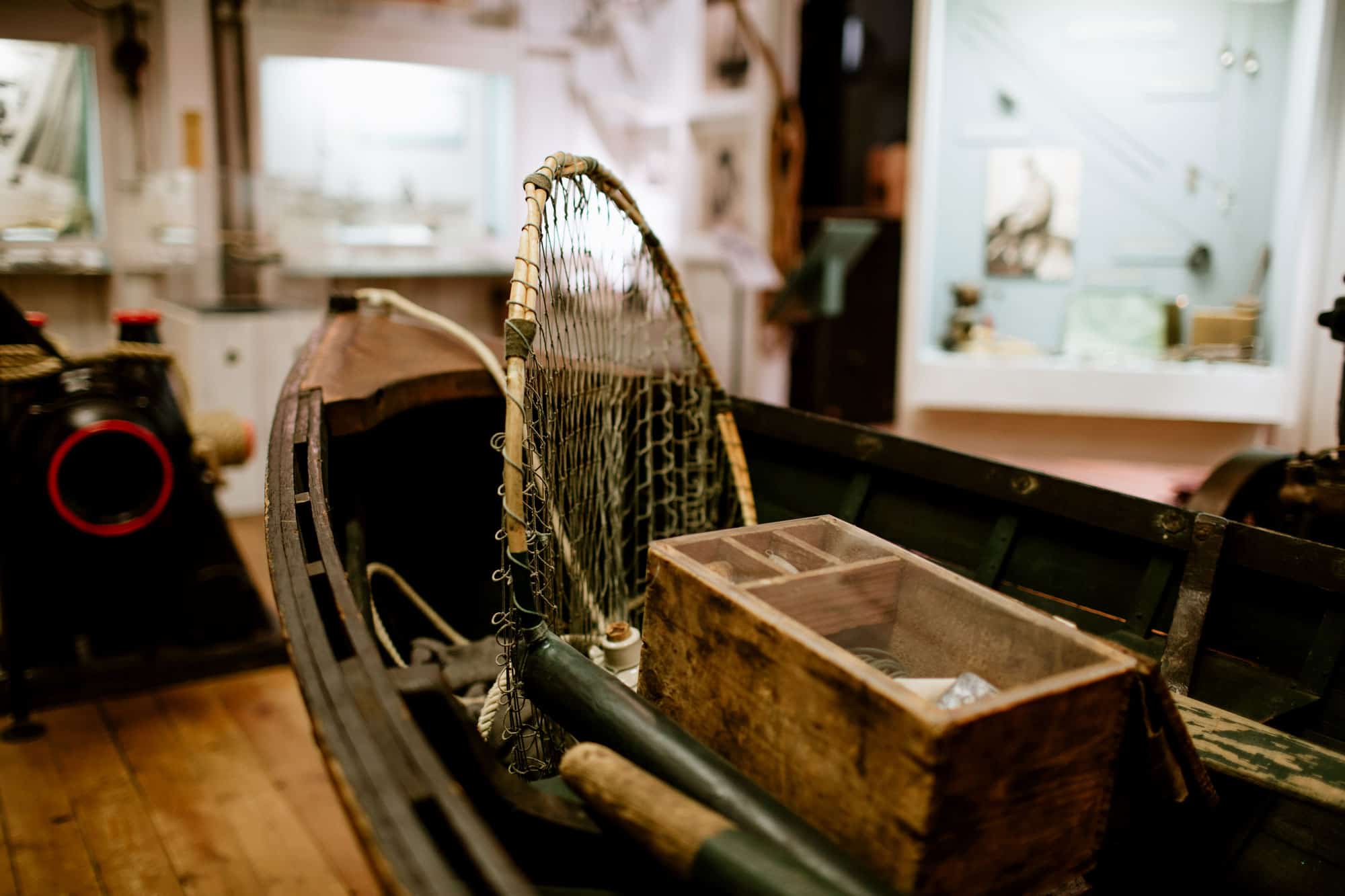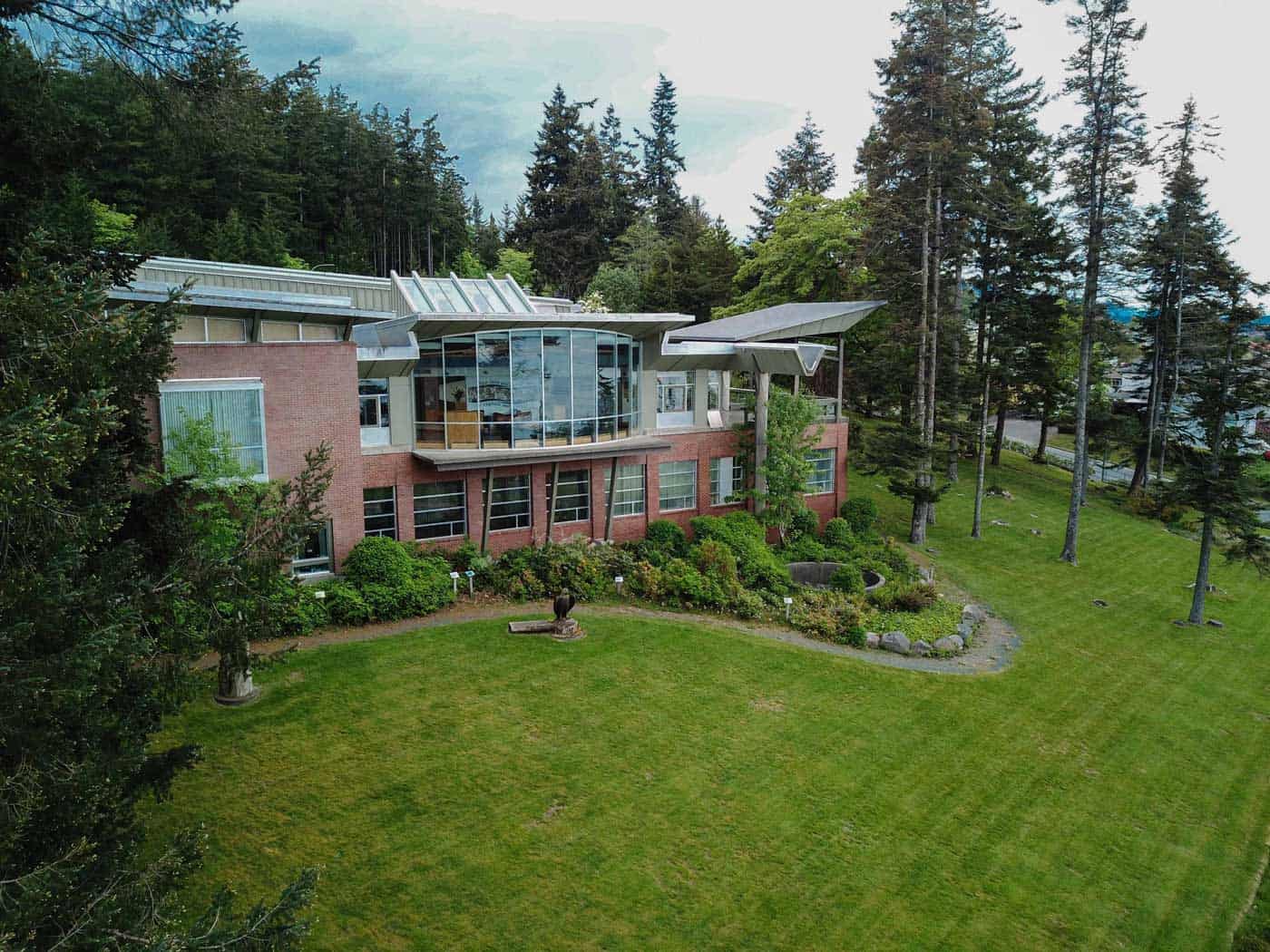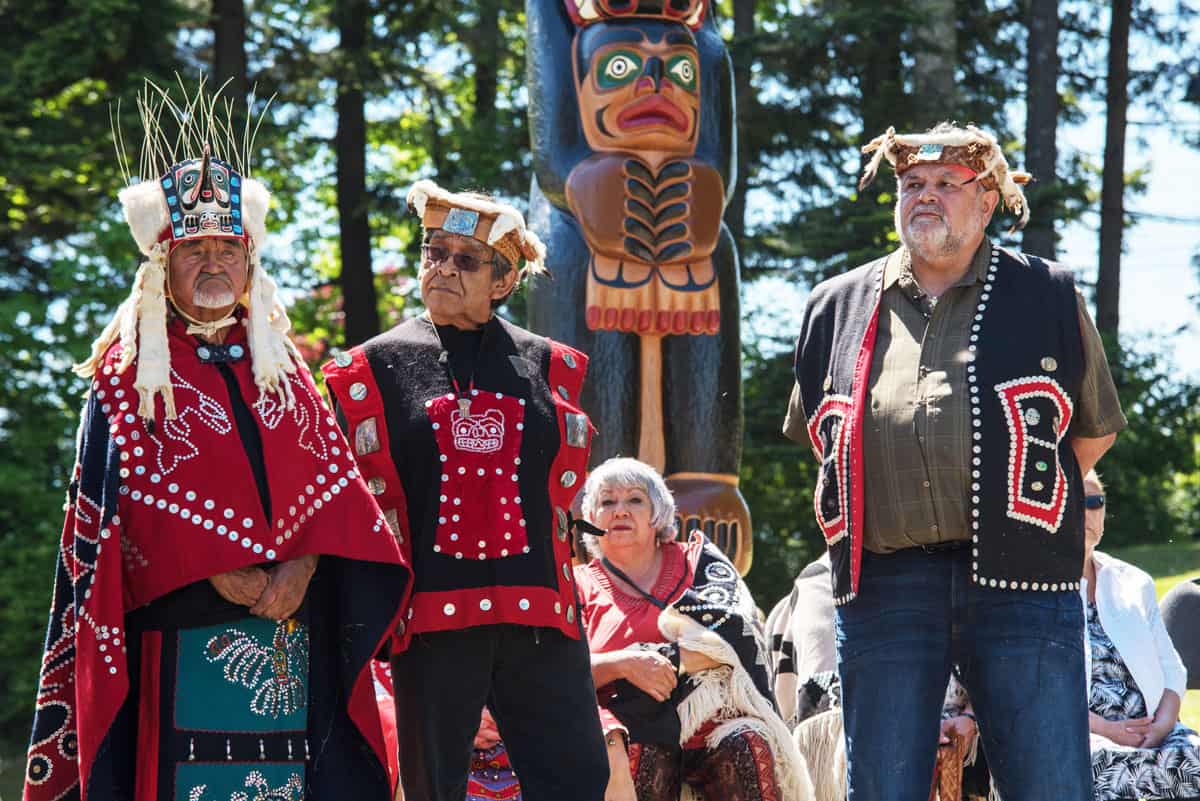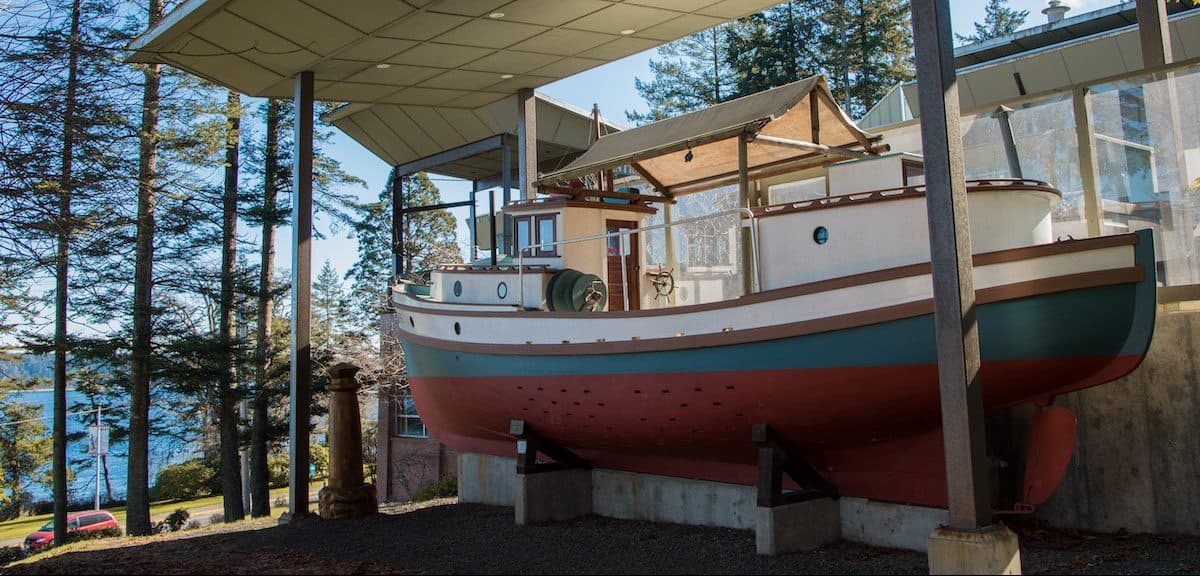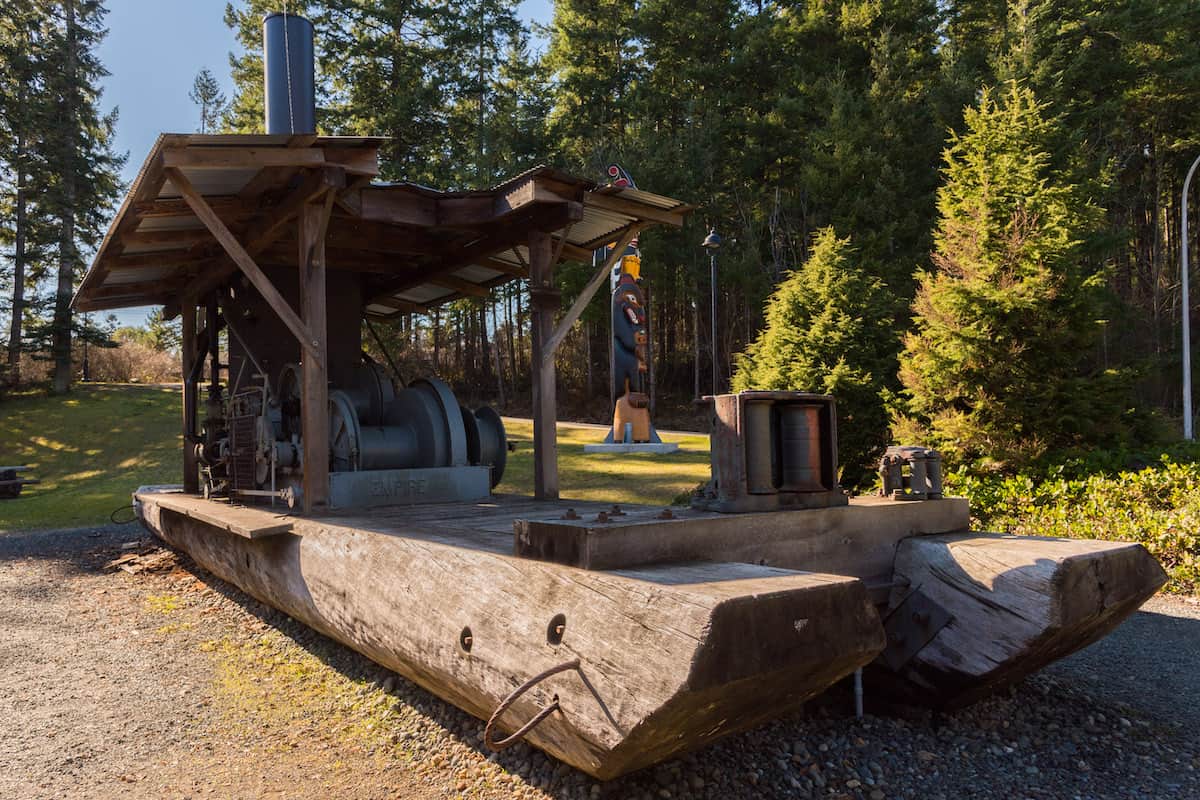Current Temporary Exhibit
Keeping the Song Alive
The Museum at Campbell River is pleased to be the first stop of a new traveling exhibit Keeping the Song Alive. Developed by the Bill Reid Gallery of Northwest Coast Art, the temporary exhibit is open from February 9 to May 5, 2024. Guest curated by Cheryl Kaka‘solas Wadhams and co-developed with the Jewish …
Permanent Exhibits
First Nations
The Museum sits on the traditional territories of the Laichwiltach First Nation. Within the collection area represented by the Museum are over 30 First Nations, including three separate language and cultural groups, the Kwakwaka’wakw, Nuu-Chah-Nulth and Coast Salish. This gallery strives to illustrate the longstanding history of the first peoples …
Transitions Gallery
The Transitions Gallery explores some of the difficult parts of our past – a past that includes devastating population loss, Indian Residential Schools and the marginalization of native peoples. It is a past that is still very much with us.
Logging in the Jungles
Since the 1880s, logging has played an important role in the development of this region. The area north of Powell River, stretching up to Drury Inlet known by loggers as the “Jungles” is a complex maze of islands, inlets and channels. Don’t miss the outside logging exhibits – the Hayes-Anderson …
Log Cabin
Built of Douglas Fir logs, the Museum’s log cabin is modelled after one built in the late 19th century near Bates Beach (south of Campbell River) by British settler James Curtis. Paintings by Curtis’ brother George were used as the basis for details in the exhibit. The cabin’s 12′ by …
The Willows Hotel
A Campbell River landmark during the town’s early years, the Willows Hotel served both an international sportsfishing clientele and the rough and ready loggers from isolated camps. This permanent exhibit shows the Willows’ façade and entrance through which visitors step into the hotel lobby as it would have appeared c. …
Coastal Lifestyle: The Floathouse
The floathouse represents a lifestyle that evolved on the British Columbia coast a hundred years ago. It was an answer to economic necessity and the rugged terrain that defied road construction. Floathouses provided a portable home base that could be moved from one working location to another. On a coast …
Sportsfishing
Adjacent to the Willows Hotel, a dockside area reflects the sportsfishing activity which made Campbell River famous, including specially made rowboats for Tyee fishing, boatbuilding tools and an array of fishing tackle.
Commercial Salmon Fishing
Fishing has provided sustenance to the peoples of coastal British Columbia throughout the ages. With the arrival of Europeans in the 19th century the harvesting of fish, particularly salmon, became an industry as well as a food source. To learn about another type of commercial fishing, check out the cod …
Outdoor Exhibits
West Coast Garden
Winding paths lead through gardens containing 80 different species of plants native to the region; their succession of blooming times and subtle variety of flowers, fruit and foliage offer interest throughout the year. Illustrated signage identifies the wild plants by their First Nations, English and Latin names, also describing their …
1930 Hayes-Anderson Logging Truck
This truck is displayed in an outdoor exhibit at the Museum at Campbell River. It represents an important era in the progression of log hauling techniques, complementing the interior logging exhibits that include oxen hauling and early skid roads. Local members of the North Island Vintage Vehicle Preservation Society authentically …
Thunderbird Bear Pole
The beautiful “Thunderbird Bear Pole” was inspired by a pole carved by Sam Henderson in the 1960s. This pole was carved by Sam’s son Bill and grandsons Junior, Greg and Will. Thunderbird Bear Pole Museum at Campbell River In 1966, Sam was commissioned by the Department of Highways to carve …
Soyokaze (Gentle Wind)
This 37 foot cod fishing boat was built circa 1939 by the Kishi Boatworks in Steveston for Shigekazu Matsunaga of Quathiaski Cove. Built for a cost of $3600, the carvel hulled vessel was outfitted with a 1 cylinder 8-10 Easthope engine. Openings in the central part of the hull permitted …
Steam Donkey
In the late 1800s, steam technology replaced horse and oxen hauling and increased logging production enormously. “Get rid of that dribbling pot and bring back the bulls!” was the reaction of one logger on being introduced to a steam donkey, but the machines proved so versatile their use rapidly became …

